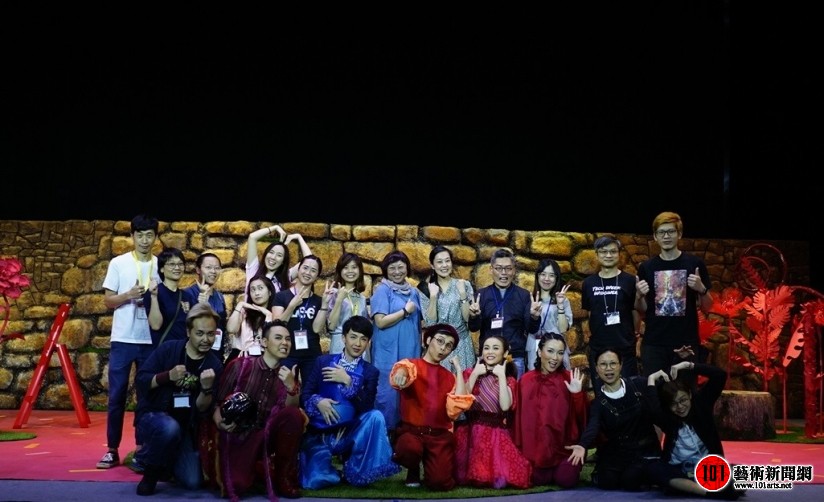Since mainland China cancelled the one-child policy, cultural and entertainment activities in the mainland have been seeking art and cultural works suitable for children to enjoy. “POP Theatre” founded by a senior actor was earlier arranged by the Leisure and Cultural Services Department to make a special trip to Guangzhou Station in the Greater Bay Area. POP Theatre performed a children’s literature theatre for Guangzhou children, which made the children and their parents happy and stimulated them to think. The performance provided parents one more choice to keep their children away from TV and cultivate temperament.
For the second time, POP Theatre performed at Guangzhou Station in the Greater Bay Area. At the beginning of this month, the British children’s literary drama “Peacemaker”, which premiered in Hong Kong in 2016, was staged in the relatively remote Zengcheng District at the beginning of this month. They all understand the need to communicate with each other and break down barriers. The art troupe even arranged a workshop before the performance, where the staff of the troupe gave the children an art education class at close range to convey the importance of helping each other and friendship.
However, the most enjoyable is the form of performance. Artistic director Chan Wing Chuen chose to interact with children at the beginning and end of the performance to stimulate their thinking. As soon as the performance began, the actors used music and movements to “warm up” with the children. The theatre was filled with cheers and laughter. At the end of the story, the actors followed the original script and asked questions to stimulate the children’s thinking. Thinking about “how can we continue the friendship blocked by the wall?”.
Chan Wing Chuen, who performed “Peacemaker” three times in China and Hong Kong, said that it was not a deliberate decision to perform the children’s literature by British author David Holman. He just feels that his responsibility is to stimulate the audience to think through drama. He said that this is the cleverness of the author. He hopes that people will think about future, friendship, the estrangement between people and how to break the invisible wall. “This requires humans of different nationalities to work hard with each other. Everything needs to be done with sincerity, peace and humility.” He said: “Drama has its elements of entertainment. Every good drama leads you to think, and children also need to have an imaginary world. It is insufficient and dissatisfying for you to watch a play but stop thinking after you leave, just for entertainment. Every time I perform a drama, regardless of age, I hope that the audience can reflect and imagine. So that they can know the shortcomings of themselves and the society. This is a good performance”.
Different places have their own unique cultures. After Chan Wing Chuen’s experience, he made some fine tunings when performing the show in Zengcheng District, Guangzhou. “Children in Guangzhou are simple, and children in Hong Kong are smart.” Therefore, a joke needs to be expressed more clearly. Parents in both places praised the troupe’s performance as a kind of “easier” children’s drama. Chan Wing Chuen believes it is because “the work has a clear message.”
The seven-and-a-half-year-old child, namely Au, is obviously the audience that the author is looking for. He likes the work and finds it very touching because the red and blue people in the play are afraid of each other at first but get along with each other in peace in the end. He pointed out that in real life there are “people who are afraid of people”. When asked how to solve it, he said, “Explain to them that there is no malice and are willing to be friends with them.” As for the children younger than Au are excited with the performers’ juggling and dancing.
In fact, the parents also enjoy the performance, and appreciate it as a kind of artistic and cultural activity. Ms. Feng, who accompanies her three-year-old daughter, hopes her daughter can feel the cultural atmosphere in it. These kinds of activities can cultivate temperament and make her daughter watch less television programs. “Live dramas are very different from TV and movie performances, so I hope she can experience it since she was a child.” Ms. Feng, who likes entertainment activities, is more hopeful that her daughter will like it. So that the mother and daughter can enter the theatre together in the future.
Ms. Huang, whose daughter is in the third grade, was deeply impressed by sitting close to the stage. She pointed out that although it was the first time for her to watch a drama, but she felt that “it was very different from watching a movie. The performance was so innovative.” At the same time, she benefited a lot from the performance, which made her rethink the relationships between different people. “There are walls between people. In fact, the walls are not necessary and can be demolished. We need more communication.”
Ms. Zhao, whose son likes to watch live performances, also praises the performance. Thinking that its attractiveness is something that traditional media performances do not have. “The close contact between theatre and audience move people’s hearts. At the same time, we encourage children to stay away from TV. It’s very meaningful to go to a theatre that is very artistic and elegant. TV is incomparable to drama.”
Zhao, who works in the arts and literature field, appreciates the practices of Hong Kong art groups even more. She pointed out that the mainland and Hong Kong art troupes have their own advantages in showing stage aesthetics in children’s theatres. However, “(Hong Kong Arts Troupe) gave me the biggest impression is that it will give full play to the imagination of children and will not frame children’s thinking. But the general thinking in mainland China has such a particularly satisfactory ending. Today we can leave more room for the children to imagine. I think this is very good.”
(The above is a translated version, original text is only available in Chinese.)
http://www.101arts.net/viewArticle.php?type=artsnews&id=2574&gid=3&auid=47

